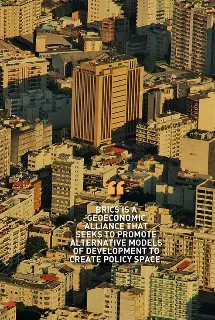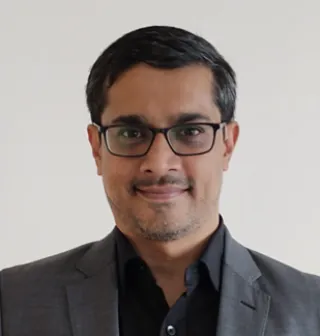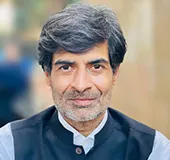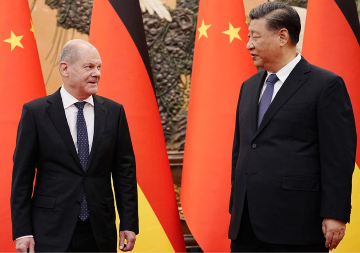(From 2016: ORF Primer)
Recent consensus has written off the BRICS. Is there a case left to be made for the grouping? Samir Saran and Abhijnan Rej argue that India is the B in BRICS for ‘bright spot,’ and that it will need to take the lead in revitalising the grouping through the NDB and the NDBI as it assumes chairmanship of BRICS this year.

As unusual as it may sound, management-speak sometimes does lead to good ideas. One such idea came from Goldman Sachs’ Jim O’Neill grouping the four growing emerging markets — Brazil, Russia, China and India — into the acronym ‘BRIC’ in 2001. Eight years later, BRIC emerged as a formal plurilateral grouping and, in 2010, South Africa’s bid to join BRIC was successful, adding the ‘S’ to the acronym. Between the five countries, BRICS accounts for about 20 percent of the world’s GDP and 43 percent of the world’s population. Three BRICS members are nuclear states; two are permanent members of the United Nations Security Council; all are in the G20.
Seven years later, serious questions are being raised about individual BRICS states as well as the relevance of the grouping. China’s ‘growth transition’ continues to both drive and spook global markets; the once axiomatic proposition “China is the world’s factory” no longer seem to hold. Between Crimea and Syria, Russian military power remains capable of upending the current geostrategic status quo. With the start of the impeachment proceedings against Dilma Rousseff in December last year, Brazil’s political future remains uncertain, likely to exacerbate its worsening economic condition. Unemployment in South Africa rose to a 10-year high in 2015, at 26.4 percent. [1] India, meanwhile, seems to be getting back on track. Prime Minister Narendra Modi has embarked on a vigorous engagement with the world since coming to power in 2014, bringing both Beijing and Washington closer to New Delhi in a pragmatic way. Without any hyperbole: India is, in fact, the ‘B’ in BRICS, the ‘bright spot.’ If BRICS has to be more than a buzzword, India’s economic performance at home and diplomatic vigour abroad are what could transform the coalition to a credible creator of new growth and development space. This should be India’s stated objective as it assumes the BRICS presidency this year.
It is important to clarify what BRICS ultimately is: It is not a trading bloc or an economic union per se. Nor is it a political coalition — BRICS member states have foreign policies that are widely divergent. Brazil, India and South Africa broadly orient themselves towards the liberal end of the political spectrum. China pursues a trajectory that will, sooner than later, put it on a collision course with the United States even as it leverages the West in the medium term for its economic growth. And finally, Russian intransigence continues to be perceived by the North Atlantic Treaty Organization as its single greatest threat. BRICS, broadly speaking, can be viewed as a geoeconomic alliance that perceives power concentration in the hands of Bretton Woods institutions as unfair and seeks to promote alternative models of development — through the sheer weight of the collective — to create policy space. Viewed through this prism, the New Development Bank (NDB) and its effectiveness is what will define the coalition in the coming years.
A natural corollary of excessive power concentration in the hands of Bretton Woods institutions is dollar dominance. That is in turn of great concern to emerging economies. Consider the US Federal Reserve’s decision to raise its policy rate by 0.25 percent on 16 December 2015. Any increase in the US policy rates makes the dollar stronger relative to other currencies by improving the returns on US bonds; the latter also results in capital outflow. The International Monetary Fund (IMF) is averse to competitive devaluation of national currencies, notwithstanding China’s moves in this direction. In balance, this means that for all practical purposes the value of national currencies are a function of the US Federal Reserve, an uncomfortable situation for national treasuries. Indeed, the December 2015 hike in the US policy rate has seen the Indian rupee depreciate considerably against the US dollar. Not surprisingly, Russia, China and India all are decreasing dependency on the US dollar as a geoeconomic hedging tool, [2] as dollar dominance also “gives the US exceptional power to delay or deflect balance of payments adjustment and to coerce other powers through the imposition of economic sanctions.” [3] The US currency policy, in other words, is an instrument of US economic statecraft, a fact of great concern to the Russians and the Chinese, with India and other emerging economies being collateral damage.
Now to come to the jewel in the BRICS crown — the NDB. It formally came into being after the 7th BRICS summit last year, with the Indian banker K. V. Kamath instituted as its president. Its mandate as a multilateral development bank is broad, though catered to the specific developmental needs of the member countries. On one hand, by 2050 the middle class in BRICS states will account for half of the global consumption; on the other hand, they currently account for half of the world’s poor. [4] Beyond these unique developmental challenges that NDB seeks to redress, the broader geopolitical goal of the bank will be to reduce reliance on the Bretton Woods architecture by channelling regional surplus internally, devising alternative cross-border payment mechanisms and promoting the use of local currencies intra-regionally by internationalising them. These goals are the ones which give the NDB more teeth than, say, the Asian Development Bank. While the size of the bank is unlikely to affect global financial flows in a significant way, it will dramatically alter the ethos of the extant financial architecture.
For the NDB — and, inter alia, the BRICS — to flourish, what member states need to ensure is greater policy connectivity. This can only be achieved by the establishment of a lean knowledge hub — the Institute (NDBI)—“which should function as bank of ideas, a storehouse of experience and a knowledge powerhouse,” as Modi noted at the BRICS leaders’ summit on the sidelines of the G20 summit last year. [5] The NDBI is visualised to be designed along the lines of the Development Economics Vice Presidency of the World Bank or the research arms of the IMF. In line with the stated political and economic objectives of BRICS, the NDBI must focus on the following three areas:
The New Digital Economy: As a scholar recently notes, “the digital dimension of Eurasian connectivity has yet to be addressed by the [Asian Infrastructure Investment Bank] or other regional bodies.” [6] The NDB can address this lacuna by financing digital connectivity in Eurasia, with Russia taking the lead. The NDBI should also provide knowledge inputs as BRICS moves towards creating an alternative to the global SWIFT payment methods and a BRICS-wide clearing house. The promotion of micro, small and medium enterprises remains high on the agenda of the NDB: The NDBI should suggest ways in which such businesses in the BRICS countries can sell outside their national borders through a five-country e-tailing network, which would be supported through BRICS-wide payment and clearing mechanisms. In short, the challenge is to develop a market architecture by which, say, an Indian can source Brazilian pineapples, with payment routed through a BRICS payment network and cleared in Indian rupees.
Monetary policy surveillance and counter-measures: BRICS members have agreed to a $100 billion Contingency Reserve Arrangement (CRA), to be operational this year. For the full functioning of the CRA, an early-warning system must be developed that monitors currency markets in member states and shifts in monetary policies, including shifts in monetary easing policies, in advanced economies. In effect, it will act as an observatory of global financial markets, an expert base for foreign exchange issues and a hub for BRICS macro-prudential measures.
The policy surveillance mechanisms can be extended to the establishment of a BRICS credit ratings agency which would rate advanced economies’ performance, much in the same way that the IMF does with its sovereign credit ratings. This political tool will go a long way in breaking the monopoly of Bretton Woods institutions as the final arbiter of the health of the global economy.
Development of local currency bond markets and currency swaps: There is a pressing need to diversify away from bank finance and to introduce a greater role for capital markets, both local and global. Currently, the majority of corporate capital expenditures in new projects both in China and India is through bank loans. A key focus area to change this status quo is the strengthening of local currency bond markets in the BRICS region. The process of internationalisation of BRICS currencies should also be facilitated through currency swaps as well as through facilitation of trade in national currency-denominated bonds in offshore BRICS centres.
BRICS, this commentary takes as a premise, is a geoeconomic alliance with an unstated aspiration to reduce the role of Bretton Woods institutions in growth and development processes, allowing space for alternative solutions to unique developmental needs. Additionally, the alliance offers New Delhi a greater bargaining space as it seeks to gain more prominence in these institutions. While the challenge for India as it assumes BRICS presidency this year is to ensure that BRICS does not overreach in terms of its goals and thus end up diluting the agenda, it is also clear that India will need to be the wind to the BRICS sail for the foreseeable future. Deft ideation and establishing effective new institutions to complement the old ones will be the Indian goal. If the common minimum that member states can agree on is economics, the coalition must build on in it without a hint of activist-internationalism. New Delhi must ensure that a ‘Delhi Declaration 2.0’ is a strong restatement of BRICS economic commitments, and use it as signalling to the West that it is not averse to using this coalition to balance power.
[1] Patrick McGroarty, “South Africa Unemployment Hits 11-Year High,” Wall Street Journal, May 26, 2015.
[2] Ulrike Esther Franke, “Why Emerging Countries are Hedging Against the Global System,” in Connectivity Wars: Why Migration, Finance and Trade Are The Geo-economic Battlegrounds of the Future, ed. Mark Leonard (London, UK: European Council on Foreign Relations, 2016), 184-185.
[3] Hans Kundani, “Europe’s Limitations,” in Connectivity Wars, 159.
[4] Samir Saran and Vivan Sharan, “More Than Just a Catchy Acronym, Six Reasons Why BRICS Matters,” Global Times, June 9, 2013.
[5] “Main statement by the PM in the BRICS leaders’ meeting,” November 15, 2015, www.narendramodi.in/main-statement-by-pm-in-the-brics-leaders-meeting-375932.
[6] Parag Khanna, “Russia on the Cyber Silk Road,” World Economic Forum Global Agenda on Russia, December 18, 2015.
The views expressed above belong to the author(s). ORF research and analyses now available on Telegram! Click here to access our curated content — blogs, longforms and interviews.

 PDF Download
PDF Download




 PREV
PREV



